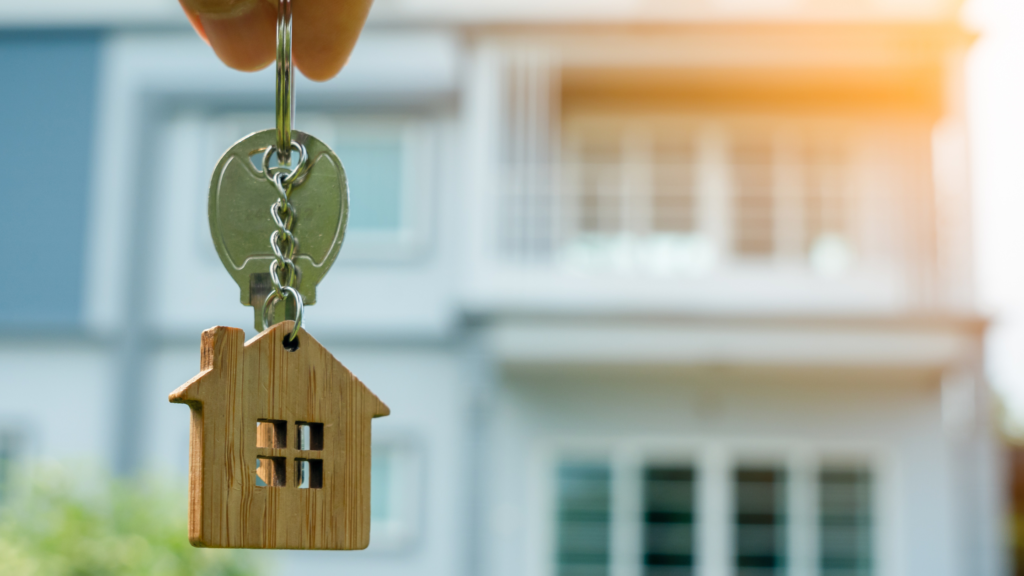Rental Management Program

Tracking rental properties within an Association has long been a challenge to both Management and to the Board. “Managing” those Owners that choose to rent by ensuring they abide by any policies the Association might have regarding renting is even harder. It goes beyond the scope of the Management Agreement, and certainly adds further burden to the volunteer Board member experience. Recognizing this issue, Sharper has rolled out a program that adds the necessary resources to help manage this task, while allocating the cost to those creating it (the Owners that rent). This program is in the form of an Addendum to the Management Agreement. If adopted, it engages our rental management staff and gives the following benefits to the Association. Sharper Management will: · Track all rental properties and their Lease terms · Keep file of all Tenant contact information · Ensure all required paperwork is on file (ex: copy of Lease, Addendum, etc.) · Verify compliance with any City requirements (ex: rental license) The costs associated with engaging in this program is charge to the Owners that rent on an annual basis. As a Board, you have the authority to establish fees – and this minor Owner fee creates an opportunity to better manage the rentals in your community. Speak to your Manager or contact Client Care for more information. clientcare@sharpermanagement.com
The Importance of Loss Assessment Coverage

Insurance in an Association can be confusing. One important distinction in your personal homeowner policy package (commonly called an “HO6” policy) is Loss Assessment Coverage. This coverage is typically different from your “Real Property Coverage.” Real Property Coverage should cover your personal contents, coverage of building construction items like flooring and walls that may NOT be insured by the Association’s Master Policy (which can vary greatly by Association) and, at a bare minimum, coverage of all of those covered components up to the Association’s Master Policy deductible. Loss Assessment Coverage is separate and important to understand. At is core, it is actually quite simple. The Association typically assesses the owner(s) for their share of the Master Policy’s deductible in the event of a loss. The homeowner simply submits that letter, stating they’re being assessed to their HO6 carrier, and their HO6 carrier pays out that deductible assessment. *If the owner doesn’t have this coverage, it is out of their pocket and the Association will move to collect on it just as they would any other regular assessment (“dues”) or special assessment. This is becoming increasingly important because, for the past decade, Association Master Policies have had increasing deductibles – sometimes $25,000 or $50,000 on common losses; and almost all Association policies now have a separate percentage-based deductible for a loss related to wind and/or hail damage. This “wind/hail deductible” is often based on the building value and can range from 2-5%. In the case of a hail storm and loss, homeowners are susceptible to significant assessments to help the Association make up the deductible. Let’s go through three scenarios to help understand how Association deductibles work – and how (and why) Loss Assessments Coverage comes in to play. Scenario 1 – Condo Building Water Leak Unit 200 has a backed-up sink that caused water damage to unit 200 and 100 below. The Association has a $10,000 deductible on the Master Policy that has “all-in” coverage. Damage to both units totals $50,000. The Master Policy is going to cut a check to the Association for $40,000 (less the $10,000 deductible). The Association is going to assess both unit owners $5,000 to make up the $10,000 deductible. The Association is made whole on the claim and the loss/damages remedied. Scenario 2 – Fire to a Townhome Unit The end unit of a townhome complex sustains a fire and the unit is destroyed. The Association has a $25,000 deductible on the Master Policy that has “all-in” coverage, less “betterments and improvements.” Damage to unit is a complete loss. Value for the home is determined to be $200,000 to rebuild the unit back to the original specifications. The Master Policy is going to cut a check to the Association for $175,000 (less the $25,000 deductible). The Association is going to assess that homeowner (since it was the only unit affected) $25,000 to make up the deductible. The Association is made whole to rebuild the unit to the original specifications – the homeowner’s HO6 policy covers the personal contents and any “betterments and improvements” that may have been made by the owner, subject to whatever they had for real property coverage. Scenario 3 – Hailstorm to a Townhome Development Now it gets complicated. A 100-unit townhome development sustains a hailstorm and the roofs are totaled. The Association has a 4% wind/hail deductible on their policy and a total property value at $30,000,000. The loss for getting new roofs will cost $3,000,000. The Master Policy deductible for the hailstorm is $1,200,000 (4% of $30,000,000). That means the Association will receive a check for $1,800,000 (less the $1,200,000 deductible). The Association is going to assess every unit owner $12,000to make up the $1,200,000 deductible. The Association is made whole on the claim and new roofs are installed. In each of these scenarios, the Association is assessing the deductible back to the owners benefiting. Scenario 3 is significant, because the Association has to collect $12,000 from EVERY unit owner. It is a vulnerable place for the Association to be in. And it is a vulnerable place for each homeowner to be in if they don’t have Loss Assessment coverage to cover that assessment. Hopefully this is helpful in understanding how Association deductibles work – but more importantly, hopefully it illustrates just how imperative it is that EVERY owner has adequate Loss Assessment coverage as part of their H06 policy package.
Communication is Key: Forging Stronger Communities through Effective HOA Communication

The Foundation of Community Harmony Effective communication lies at the heart of a thriving Homeowners Association (HOA). In this blog post, we will delve into the critical role of clear and transparent communication within an HOA, exploring why it is the foundation for building stronger, more harmonious communities. The Significance of Clear Communication in HOAs Clear communication is the lifeblood of any community, and HOAs are no exception. Your community wants to feel heard, and they also want to feel valued, which does not happen without communication. If you are implementing changes, those changes need to be effectively communicated to establish trust along with cooperation. When people feel left in the dark when it comes to changes, negativity and anger can arise, which is never good. It is important to show through your communication efforts a sense of unity among residents to create a healthy community environment. The Impact on Community Engagement When communication is conducted effectively, community engagement improves along with transparency. Residents will feel more inclined to join community events, participate in discussions and create a sense of belonging. This can even open the door to new initiatives created when people feel like they are in a positive environment to want to make positive changes themselves. Tips for Successful Communication Strategies in HOAs 1. Regular Newsletters and Updates: Explore the power of regular newsletters or community updates distributed through various channels. Sharing consistent information keeps residents informed about upcoming events, policy changes, and other crucial updates. 2. Digital Platforms for Community Interaction: Communication through social media and online forums is another great communication strategy. These channels provide a space for residents to voice concerns, share ideas, and connect with their neighbors. 3. Town Hall Meetings and Open Forums: Town hall meetings and open forums create a platform for direct communication between the HOA board and residents. By creating regularly scheduled meetings can improve transparency and address concerns in real-time. 4. Utilizing Email and Text Notifications: Email and text notifications for urgent updates or time-sensitive information is a great way to keep your community informed. These channels ensure that residents receive critical information promptly. Handling Conflict Through Effective Communication Conflict is inevitable, but effective communication can be a powerful tool for resolution. By effectively communicating the rules set for your community, you leave less room for confusion or interpretation and more room for transparency and guidelines. There can come times when conflicts arise internally between other community members and by having clearly defined rules prevents these conflicts from escalating. Building a Culture of Transparency As mentioned earlier, transparency is crucial to maintaining a healthy community and should be considered a cultural cornerstone within an HOA. Setting a culture of transparency, openness and honesty builds trust among residents. In turn, by being as transparent with residents as possible promotes a positive community atmosphere. Elevating Community Living Through Clear Communication Having successful communication tactics lead to running a healthy HOA. By being transparent with your community through various forms of communication, you keep your residents happy and informed. It is not just a necessity but a catalyst for building vibrant communities. Take advantage of multiple communication strategies from newsletters to open forums. Continual communication efforts are required to maintain a healthy community. Ready to elevate your HOA management? Contact us today to learn more about Sharper Management’s HOA property management services. Sharper Management is a locally-owned, mid-sized property management company offering a full-suite of premiere services to the Minneapolis-St. Paul seven-county area.
Selling in your HOA

Thinking of selling your home? Now is the time! Real estate is hot, hot, hot. The current shortage of homes for sale stems back to Spring of 2020, as COVID-19 hit just before selling season. There is still very limited inventory, but there are plenty of buyers. Because the demand is so high and the supply is low, the value of your home goes up. Mortgage and interest rates are historically cheap, but listing prices remain high. When selling in an HOA, there are certain steps and processes to take. Begin by reviewing your Governing Documents for your Association. Potential buyers will want to see documents pertaining to: Monthly Association fees Master insurance policy Bylaws, rules, & regulations Recent Association financial statements Current special assessments It’s a good idea to hire a realtor who has experience selling properties in HOA’s. They will be able to assist you in gathering all the necessary documents. We also recommend cleaning and staging furniture and décor to really show off the space. This will help them to envision their own items in the home.
Summer Noise, Courtesy, and Your HOA’s Rules

Summer is filled with friends, family, fun, and, unfortunately, noise. People are outside later at night in the season of graduation and block parties, and the noise only escalates surrounding the 4th of July with sounds of fireworks. It’s important to be courteous to your neighbors; as the old saying goes, treat others the way you want to be treated. You have every right to have fun this summer, but be aware of your noise level during parties or late nights. Your HOA likely already has rules in place about noise, as issues like barking dogs aren’t unique to any one season. These rules should extend to seasonal noise, like fireworks. In Minnesota, firecrackers and any other sky explosives are illegal. However, even small, legal fireworks make sound, and that noise is accompanied by the sounds of family and friend get togethers. Depending on your HOA, some noise rules may be harder to enforce than others. Talk to your neighbors if any issues arise, and if necessary, bring your concerns to the board. If enough issues arise, the board will take your input into account when revising your HOA’s rules. Always be courteous and respectful, but keep tabs on your noise to make sure you aren’t irritating other residents this summer
HOA Insurance Policies

For residents and HOA board members, there seems to be a lot of lingo when it comes to insurance. How do you know which policies cover which property? How do you know what insurance requirements to make when managing an association? We’ve explained the “walls out” and “walls in” policies to help you understand what each one covers. Master Policy This policy is also known as the HOA insurance policy and covers liabilities or damages in common areas or on the exterior of your home. The term “walls out” can also be used to describe what the master policy will cover. However, this doesn’t mean that absolutely everything on the exterior will be covered; if a storm results in extensive damage, residents will have to help pay the association’s deductible. This is what’s known as loss assessment, and it’s a good idea to add this to your HO6 policy so you’re not paying out of pocket. In addition to exterior damages, the master policy also covers liabilities in common areas. If someone were to slip by the pool and decided to sue the HOA, the liability portion of the policy would protect residents from having to pay special assessments for lawsuit fees. HO-6 Insurance Your HOA’s master policy isn’t going to cover your personal property, or anything “walls in.” If you live in a condo or any other shared space, you’re going to need HO-6 insurance. Besides insuring your personal belongings, your association’s master policy won’t likely cover anything inside the bare walls of your unit. You would be responsible for getting coverage for unit structural items such as: Carpeting, ceramic tiles, hardwood floors Plumbing fixtures Light fixtures Built-in appliances Kitchen cabinets Wall coverings And, as mentioned previously, it’s a good idea to add loss assessment coverage to your HO-6, if not already required by your association.
Loss Assessments

In the Midwest, we’re all too familiar with summer storms and the damage they can cause to houses and buildings. HOA reserve funds are available for unexpected damages or emergencies, but using them could cause the association to be short on funds for future projects and non-insurance related repairs. Understanding how your insurance policies work can make claims and repairs a much smoother process. With heavier storms, sometimes the master policy isn’t enough to cover damages. Unit owners may need to help pay for repairs for damages to shared buildings, such as shingles being torn off a condo roof. The master policy can only pay up to coverage limits, so it’s up to the homeowners to pay the rest. The amount owed is assessed by the association, and as an owner, it is your responsibility to pay your share. However, needing to pay for community damages doesn’t mean you’re paying out of pocket. It’s a good idea as a homeowner to get Loss Assessment Insurance under your HO6 policy, if not already required. In addition to property damage, this coverage helps to pay for injuries on the premises, liabilities, and deductibles under the master policy. Homeowners who have appropriate coverage under their HO6 policy can submit a claim to their insurer. As a member of the HOA board, consider making it a requirement for owners to have loss assessment coverage to avoid any collection problems, as these assessment costs can often exceed $10,000 per unit. Boards should also work with their HOA management company to make sure that they are navigating these issues correctly. Insurance claims and loss assessments can seem confusing, but Sharper Management is here to help guide you through those difficult times.
Vendor Checklist

When selecting a vendor or contractor, it is critical to use due diligence and have a process in place for making these selections. By having a thorough process, you will satisfy your obligation as a board member while also protecting from potential liability. When evaluating vendors or contractors for selection, there are some key pointers to follow: Establish a thorough process for vendor “vetting.” Better yet, document the process for future boards to ensure consistency. Conduct personal interviews (or engage in some kind of personal contact). Confirm insurance coverage/documentation. Note that not all vendors need or have insurance, but this is an important aspect to take note of. Confirm any licensing, credentials, or certifications a vendor may have depending on its specific industry. Request multiple references and check them. Proposals are not contracts, even if all parties sign it. Always ask for a formal contract that includes important terms regarding the relationship (i.e. termination, dispute resolution). There are also special considerations for specific types of vendors and projects: Construction Projects Always get multiple bids to compare costs, operations, and qualifications. Ask for Certificate of Insurance and ensure that it is current and up to date through the anticipated length of a project. Check with the Minnesota Department of Labor and Industry to confirm license status, learn of potential enforcement action, or history. Follow up on any issues. Explore resources such as BBB, Angie’s List, Google reviews, and more. However, take all reviews with a grain of salt. Confirm contractor’s ability to complete project within your desired timeframe. Clarify methods of communication for project ahead of time. Management Companies Consider the amount of control you are relinquishing—full management? Partial? Ensure agreement covers what is expected in as much detail as possible, including things like termination options, governing documents, and auto-renew provisions. Have a thorough understanding of what services are included and what may require payment of additional fees. Understand the relationship between management and the Board and how it translates in terms of a contract. Routine/Ongoing Service Vendors Ensure there is a termination or dispute resolution process in place in the event there is an issue. Understand the schedule of services and what triggers action (i.e. inches of snowfall, days for garbage collection). As general rules of thumb, you can (and should) always negotiate a contract if there are concerns over the terms proposed. If multiple bidders are involved, allow for a process to give all bidders a fair chance at the project. Finally, make sure there is always a way to end the relationship if needed. At the end of the day, it is important to do your homework on the front end of the relationship to circumvent future issues. Do thorough research and check all available resources and negotiate for terms that you find acceptable. Luckily, Sharper Management offers a Preferred Vendor Directory. All preferred vendors are required to provide a certificate of insurance and be in good standing with the state of Minnesota. This can be a fantastic starting point in the vendor selection process: https://sharpermanagement.com/preferred-vendors/
Operations and Personal Protection Continue During COVID

As the pandemic continues, most people have adjusted to the “new normal” that is affecting everyone in the community association industry, the associations, and the owners. While we may be exhausted by the restrictions and repercussions of the coronavirus, we need to remain cognizant of actions needed to prevent the spread. There are several areas that associations should continue to monitor: CDC Guidance: Provided by the CDC, there is specific guidance for “shared or congregate housing,” which includes condominiums and other multi-family buildings. This information is comprehensive and includes many guidelines to maintain safe operations, acknowledging community associations’ unique needs and challenges. Declaration, bylaw, rules, and regulations: While there may not be specific COVID-19 related provisions, these documents provide insight on what general terms could impact or govern steps taken to respond to these issues. Social gatherings: Social gatherings should be continually evaluated, especially those seeking to occur indoors. Recommendations and restrictions are fluid, and it is important to stay abreast of these changes. Outdoor events are typically easier to implement, however with cold weather, indoor facility use may be more common. Construction projects: Continue to appropriately manage access to buildings by vendors. Create and maintain appropriate protocols, emphasizing the steps these vendors will take to ensure proper cleanliness and sanitization while working. Usage of amenities: There is ample information regarding access to amenities such as pools, fitness centers, etc. within associations. As this is an ongoing, fluid situation, it is important to create a schedule to evaluate these aspects. Adjustments should be continually made based on the latest data and guidance available. CDC Fact Sheet: Communication is critical to avoiding issues or misunderstandings in operations. Posting the updated/current CDC guidelines or fact sheet in buildings ensures that owners and others entering the building are aware of the standards and protocols in place. There is an overwhelming amount of information and suggestions for safety guidelines out there but keeping up to date on the aspects above is a good foundation. Balancing safety issues with common sense and community spirit is the best remedy available to us during this time.
Fiduciary Duty 101

As a member of your HOA’s board, you have many of duties. The most important of them is fiduciary duty. Fiduciary duty requires board members to stay objective, unselfish, responsible, honest, trustworthy, and efficient. Board members, as stewards of public trust, must always act for the good of the organization, rather than for the benefit of themselves. They need to exercise reasonable care in all decision making, without placing the organization under unnecessary risk. The duty of care is the duty to make reasonable and informed decisions. Instead of going with the first contractor you come across, shop around. Is there anyone more qualified? Less expensive? If so, go with them. Part of your job as an HOA member means choosing the best option for your community, not the easiest. The second duty is the duty of loyalty; the ability to set aside your personal interests for the good of the HOA. Don’t hire your friend as a contractor if they aren’t the best person for the job. If you want to spend money on a new project, ask yourself if it is a personal interest or a community interest. If the community would not benefit from, say, a new hot tub or upgraded gym, scrap the project. If you have questions contact Sharper Management – we are always here to help!
